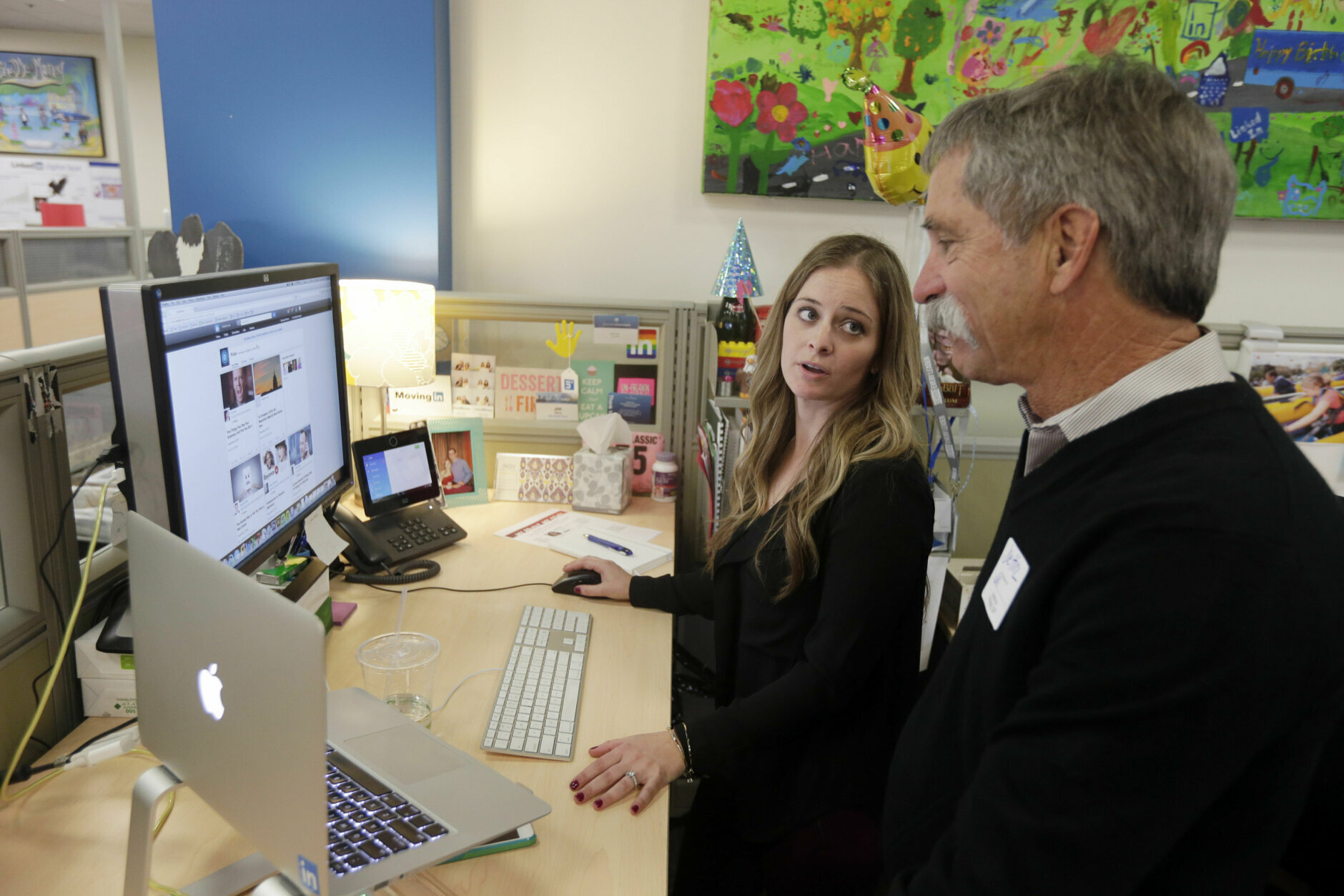How to approach career change in 2020
![<p><strong>First, be patient.</strong> How long does it take to get a new role? Recent <a href="https://zety.com/blog/candidate-experience">survey data</a> of more than 1,000 working Americans found that 80% of respondents estimate that a job search should take no more than three months. But, unfortunately wishful thinking doesn’t make this real. The Indeed study found that the average career changer in their survey spent about 11 months before deciding to take a new role.</p>
<p>Additionally, the Bureau of Labor Statistics reports that the current average length of unemployment is over five and a half months long. Don’t let the thousands of posted jobs fool you — looking for a similar job or changing professions altogether is a time-consuming process. The lesson here — brace yourself for six to 12 months to make a change.</p>
<p>[<strong>See:</strong> <a href="https://money.usnews.com/money/blogs/outside-voices-careers/slideshows/10-ceos-share-secrets-for-work-life-balance">20 Work-Life Balance Tips and Secrets From CEOs.</a>]</p>](https://wtop.com/wp-content/uploads/2020/01/job1-1880x1254.jpg) 1/4
1/4
The year 2020 could be your time to make a career change.
(Getty Images/iStockphoto/fizkes)
First, be patient. How long does it take to get a new role? Recent survey data of more than 1,000 working Americans found that 80% of respondents estimate that a job search should take no more than three months. But, unfortunately wishful thinking doesn’t make this real. The Indeed study found that the average career changer in their survey spent about 11 months before deciding to take a new role.
Additionally, the Bureau of Labor Statistics reports that the current average length of unemployment is over five and a half months long. Don’t let the thousands of posted jobs fool you — looking for a similar job or changing professions altogether is a time-consuming process. The lesson here — brace yourself for six to 12 months to make a change.
[See: 20 Work-Life Balance Tips and Secrets From CEOs.]
 2/4
2/4
Because the motivations are different for each person and multiple desires may be in play, it is important to create a plan that reflects your priorities and goals.
(Getty Images/iStockphoto/fizkes)
Next, have a plan. Why do most employees seek out a new role? One significant factor is more money, but there are many other reasons that drive transition. Surveys show top responses to be the desire to be happy, find greater or better professional development, have more flexibility or to shorten a commute. In fact, 81% of the Indeed respondents pursued greater happiness at work. The perception of happiness is relative to each person — are you seeking growth in your responsibilities or growth in your career path? Do you want less stress or greater balance? The questions are endless.
Because the motivations are different for each person and multiple desires may be in play, it is important to create a plan that reflects your priorities and goals. Once you are clear about what is required for a position to be better than your current role, have a checklist for targeting desired roles and judging if a position truly fits your long-term needs.
![<p><strong>Third, connect your competencies to the market.</strong> Desiring a career change and mapping out your targets are great first steps, but now you need to show potential employers why you are an ideal hire. A hirable candidate should be both interested and qualified. You can start this part of the process by looking at job descriptions to correlate your experience to the requested competencies and skills. To optimize your chances of being hired, pursue roles where you are at least 70% qualified.</p>
<p>If you don’t meet at least 70% of the qualifications, create a plan to develop more of the skills and experience requested. If you aren’t interested in building those skills or keep putting off working on them, that is probably a good sign that this potential role isn’t a good fit for you.</p>
<p>[<strong>SEE:</strong> <a href="https://money.usnews.com/money/careers/slideshows/the-25-best-jobs">The 25 Best Jobs of 2019</a>]</p>](https://wtop.com/wp-content/uploads/2020/01/GettyImages-1129629284-1880x1254.jpg) 3/4
3/4
To optimize your chances of being hired, pursue roles where you are at least 70% qualified.
(Getty Images/iStockphoto/fizkes)
Third, connect your competencies to the market. Desiring a career change and mapping out your targets are great first steps, but now you need to show potential employers why you are an ideal hire. A hirable candidate should be both interested and qualified. You can start this part of the process by looking at job descriptions to correlate your experience to the requested competencies and skills. To optimize your chances of being hired, pursue roles where you are at least 70% qualified.
If you don’t meet at least 70% of the qualifications, create a plan to develop more of the skills and experience requested. If you aren’t interested in building those skills or keep putting off working on them, that is probably a good sign that this potential role isn’t a good fit for you.
[SEE: The 25 Best Jobs of 2019]
 4/4
4/4
LinkedIn employee Jill Hirz Jones, left, shows her workspace to her father Joe during the company’s second annual “Bring In Your Parents Day,” Thursday, Nov. 6, 2014, at LinkedIn headquarters in Mountain View, Calif.
(AP/Marcio Jose Sanchez)
Last, create your tools. Once you feel at least 70% qualified, it is time to create your job search tools. Begin by customizing your resume and updating your LinkedIn profile to reflect your relevant qualifications. Relating your past to a new future helps hiring managers and recruiters better understand your potential. Reach out to people in your network that may have insight or connections related to your targets. Make ongoing modifications to your resume and profile based on the feedback you receive during informational meetings. Additionally, look for conferences, panel presentations, professional associations and online groups to expand your knowledge.
Ready to take on a new role next year? It takes courage to change careers (even when you are well-qualified). The great news is that the conditions have never been better to start something new — but it takes patience, planning and persistence to get the most out of the process. Here’s to your professional success in 2020.
More from U.S. News
16 Low-Stress Jobs
12 Graduate Degree Jobs That Can Pay More Than $100K
Bachelor’s Degree Jobs That Can Pay More Than $100K
How to Approach Career Change in 2020 originally appeared on usnews.com

![<p><strong>First, be patient.</strong> How long does it take to get a new role? Recent <a href="https://zety.com/blog/candidate-experience">survey data</a> of more than 1,000 working Americans found that 80% of respondents estimate that a job search should take no more than three months. But, unfortunately wishful thinking doesn’t make this real. The Indeed study found that the average career changer in their survey spent about 11 months before deciding to take a new role.</p>
<p>Additionally, the Bureau of Labor Statistics reports that the current average length of unemployment is over five and a half months long. Don’t let the thousands of posted jobs fool you — looking for a similar job or changing professions altogether is a time-consuming process. The lesson here — brace yourself for six to 12 months to make a change.</p>
<p>[<strong>See:</strong> <a href="https://money.usnews.com/money/blogs/outside-voices-careers/slideshows/10-ceos-share-secrets-for-work-life-balance">20 Work-Life Balance Tips and Secrets From CEOs.</a>]</p>](https://wtop.com/wp-content/uploads/2020/01/job1-1880x1254.jpg)

![<p><strong>Third, connect your competencies to the market.</strong> Desiring a career change and mapping out your targets are great first steps, but now you need to show potential employers why you are an ideal hire. A hirable candidate should be both interested and qualified. You can start this part of the process by looking at job descriptions to correlate your experience to the requested competencies and skills. To optimize your chances of being hired, pursue roles where you are at least 70% qualified.</p>
<p>If you don’t meet at least 70% of the qualifications, create a plan to develop more of the skills and experience requested. If you aren’t interested in building those skills or keep putting off working on them, that is probably a good sign that this potential role isn’t a good fit for you.</p>
<p>[<strong>SEE:</strong> <a href="https://money.usnews.com/money/careers/slideshows/the-25-best-jobs">The 25 Best Jobs of 2019</a>]</p>](https://wtop.com/wp-content/uploads/2020/01/GettyImages-1129629284-1880x1254.jpg)





